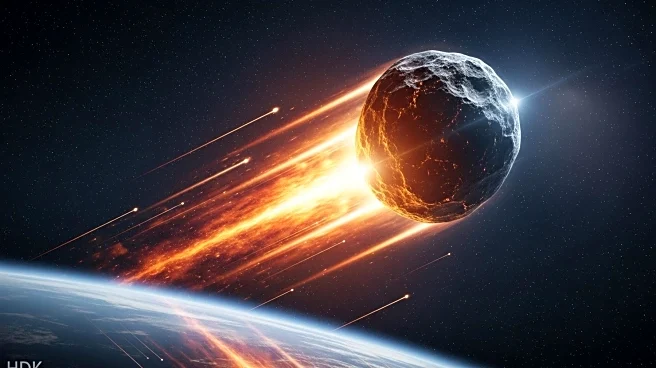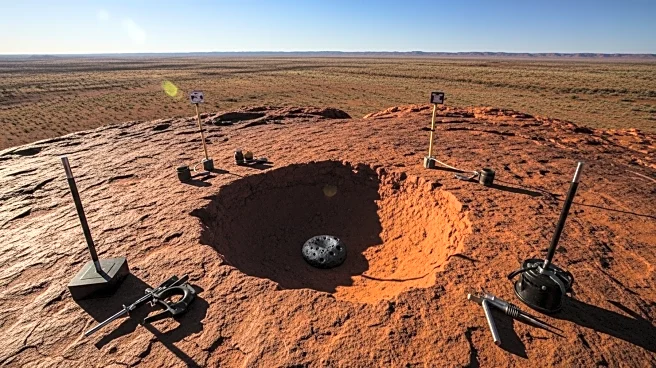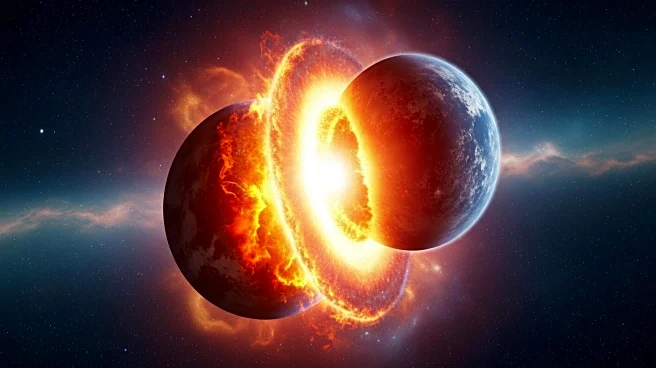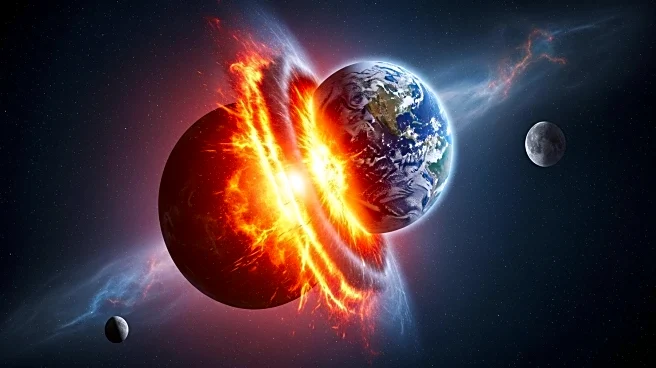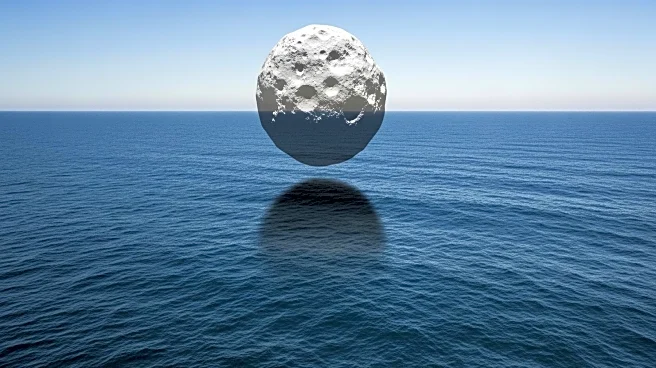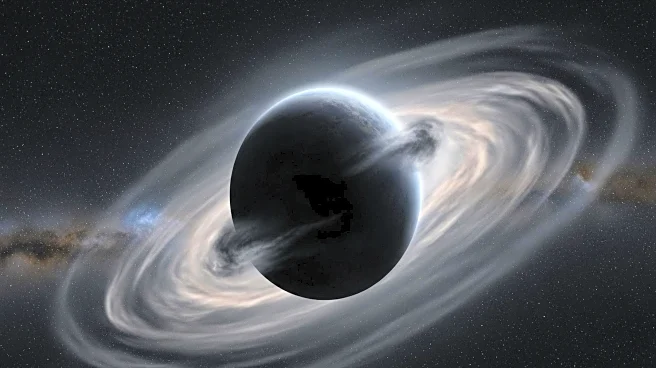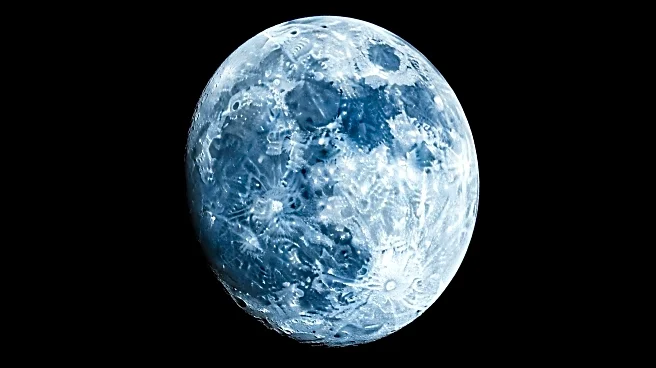What's Happening?
A new study has confirmed that the Silverpit Crater in the southern North Sea was formed by an asteroid or comet impact around 43-46 million years ago. The research, led by Dr. Uisdean Nicholson from Heriot-Watt University, used seismic imaging and microscopic analysis to provide evidence supporting the impact crater hypothesis. The crater, located 700 meters below the seabed, was initially thought to be formed by salt movement or volcanic activity. The discovery of 'shocked' quartz and feldspar crystals at the crater's depth provided definitive proof of the impact event.
Why It's Important?
The confirmation of the Silverpit Crater as an impact site adds to the limited number of known terrestrial impact craters, enhancing our understanding of Earth's geological history. This finding helps scientists study the effects of ancient cosmic events on Earth's structure and climate. Understanding past asteroid impacts can inform future preparedness for potential cosmic threats, highlighting the importance of continued research in planetary science.
What's Next?
Researchers will use the findings to study how asteroid impacts have shaped Earth's history and predict future scenarios. The study may lead to further exploration of other potential impact sites and contribute to the development of strategies to mitigate the effects of future cosmic collisions.
Beyond the Headlines
The study provides insights into the geological processes that have influenced Earth's development over millions of years. It underscores the importance of interdisciplinary research in uncovering the planet's history and preparing for future challenges.

